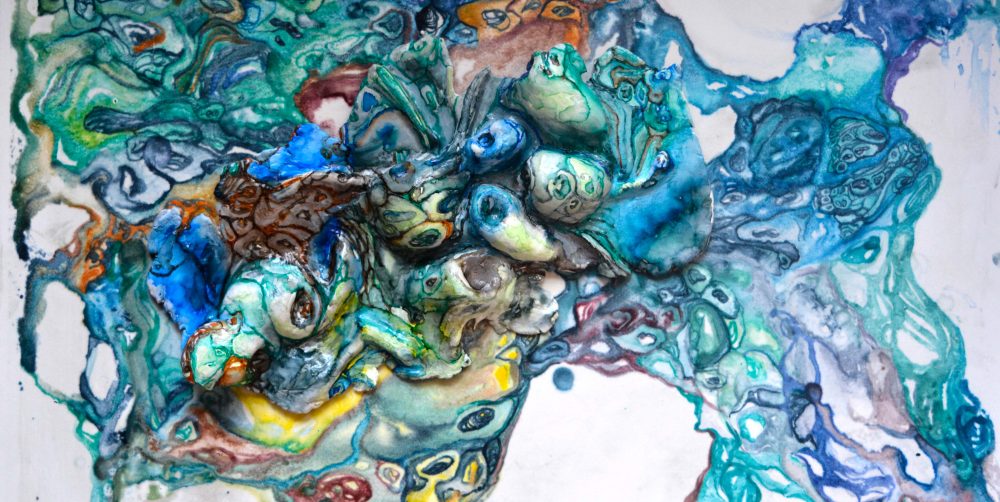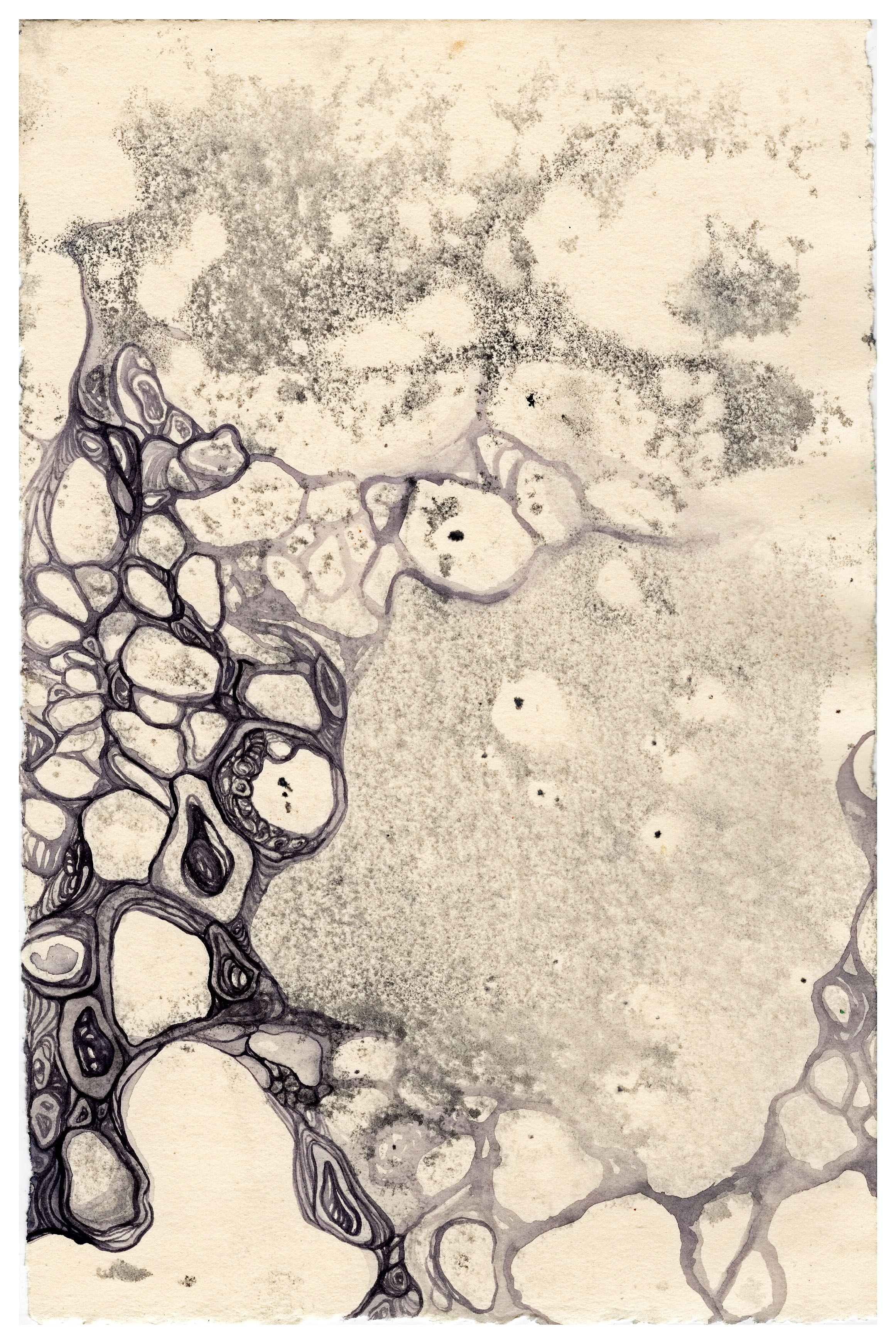
Elaine Camlin: Microcosm, a world in miniature
Caren Florance examines Elaine Camlin’s new exhibition Microcosm: A World in Miniature.
15 January, 2019
In Exhibitions,
Printmaking, Q&A
One of the beautiful things about nature is that the extremely small and the vastly huge have similar awe-inspiring qualities. Gazing through microscopes and telescopes can evoke reveries in scientists, poets and artists, and this exhibition is one of those moments.
Thanks to M16’s ‘Regional Initiative’, Canberra has a chance to see work by some of the talented artists living around our region. Elaine Camlin lives in Wagga Wagga, where she conducts her creative practice in a small home space that she calls ‘The Makeshift Studio’; when she needs to use printmaking equipment, she travels in to Canberra for printmaking sessions at our excellent public access print studio, Megalo.
Perhaps it is no surprise, with space at a premium, that Camlin is fascinated with the micro-activity of life, the organic processes of growth, regeneration and decay. However, this fascination captured her during pregnancy, an experience that directly connects body and universe in a highly visceral and emotional way. It kickstarted a looking down, in and into, connecting her imagination to our world’s minutiae. Each exhibition since then has explored this preoccupation, each body of work building from the last, finding new ways to translate reverie into image and object.
Camlin is a graduate of the ANU School of Art’s Printmedia & Drawing Workshop, where printmaking has broad and generous boundaries, and drawing is a primary tool. Her practice stays true to this, with drawing underpinning the works, shape-shifting between 2D and 3D, shrinking and growing like the life forces that she is trying to capture and share. She combines printed matter with organic materials that speak to the printing process. Paper clay, moulded and painted by hand, is symbiotically paired with colourful monotypes on paper, printed using perspex plates, to create micro-landscapes. We don’t see the plates, clear like microscope glass, but they have manifested emotional, interior landscapes, imagined and re-imagined. These abstract shapes and textures are created intuitively and iteratively, influenced by personal moments and memory.
The new works – creation – share space with recycled work – regeneration – prints cut and rebuilt, layering old into new. Ideas develop into drawings, drawings morph into prints, prints are mediated by chemical processes such as acid baths, or cyanotype exposure, and objects emerge from forms in the graphic outcomes. All of them responding organically to each other, conducted by Camlin’s responses and reactions.
As with much art, a good way to approach Camlin’s offerings is to see them as caught moments, souvenirs of the real-time action of creation: they are records of the meditative moments of connection between eye, mind and hand, decision and indecision, reflection and action. She is curious about the natural world, and in particular, the mysteries of the worlds underneath our human-scaled daily existence. Curiosity is a powerful urge, common to art and science alike. Art and science are the activities of questing imaginations, motivated by the urge to find out what happens if… Art, however, seems more comfortable with offering possibilities rather than answers. In Microcosm, Camlin is not setting out for a destination, but fully experiencing the journey, and inviting us to join her.
Dr Caren Florance
Sessional lecturer,
Printmedia & Drawing Workshop,
ANU School of Art + Design, Canberra
www.carenflorance.com





